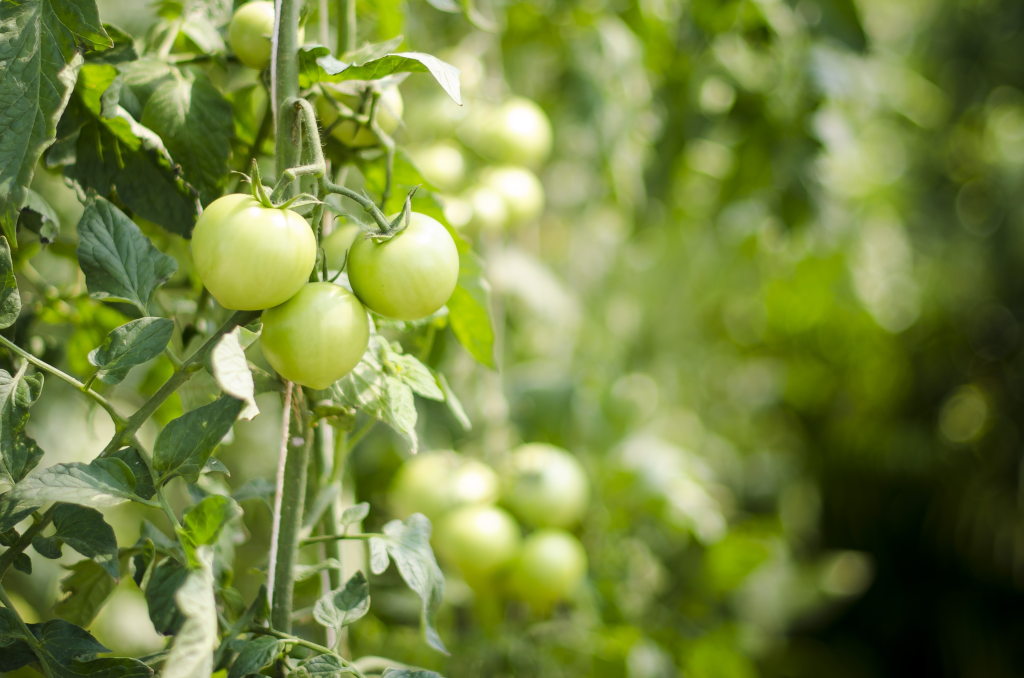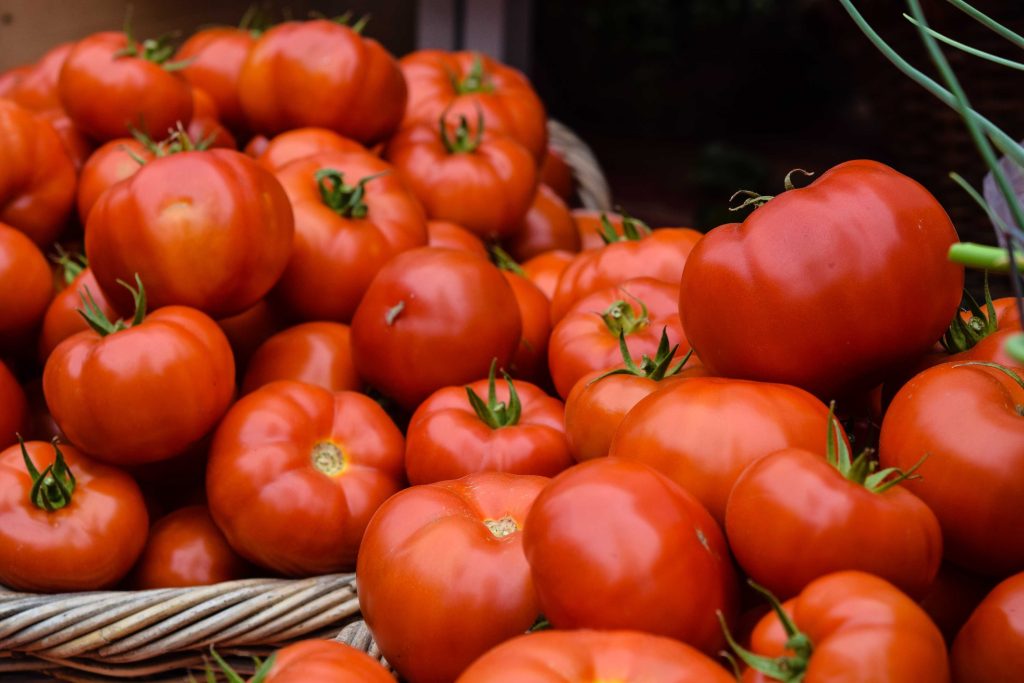
A bit of botanic notions
Tomato is a 70 cm to 2 m tall annual herbaceous plant that initially grows upright but eventually tends to lay down when bearing fruit. When crumpled, the hairs that cover the stems and leaves release a distinctive odor. The taproot of transplanted plants is less developed than that of plants grown in the ground, which have a strong taproot and a dense root system. Roots typically grow to a length of 70 to 150 cm. The irregular, large leaves are composed of unequal, more or less incised leaflets that are not all equally sized. The stem can be either determinate (growth stops at a specific time) or indefinitely developing (unlimited growth). On racemose inflorescences in the leaf axils, flowers can appear in varying numbers of 4 to 12. The ripe fruits, which come in a variety of sizes and shapes, are typically red, but they can also be yellow, almost black green striped, etc. varieties.
Where can tomatoes be grown?
They can be grown in pots on city terraces and small family gardens. The plant prefers temperatures between 18 and 24 °C; values above 35 °C result in vegetation standstill with issues with flower and fruit set. It prefers medium-heavy, well-drained soils with a high level of organic matter. It can grow in both firmer, more compact soils as well as loose, sandier soils due to its high adaptability, as long as those soils are not prone to waterlogging. For one plant, the pot needs to be at least 24 cm in diameter and filled with high-quality garden soil. Only hardy cultivars, though, ought to be grown in containers.
When can you sow?
In temperate climates, sowing can start before winter with the intention of early spring production lasting through January and February and being ready for harvest in April and May. Planting can be done in March, and harvesting can be done in the summer where the risk of frost is greatest. Planting time for seedlings in the field occurs in April to May, after the risk of frost has passed and the climatic conditions permit rapid establishment. Direct planting is also only possible from April to May. There are 90-120 cm between rows and 35-40 cm between plants when planting. It is possible to grow mature seedlings in pots because they are hardy, especially if they have been grafted.
Irrigatingand fertilizing tomato plants
Regular watering should be done at appropriate intervals, with ample water provided each time, especially in pots. Microperforated hoses should be used for irrigation. By avoiding the wetting of the leaf apparatus and the development of disease issues, their use lowers water consumption. It is recommended to add well-matured manure or manure powder and pellets to the soil during the main tillage in the fall. During soil preparation, phosphorus and potassium are given, while nitrogen should be added starting with transplanting and given four times throughout the growing cycle.
Tomato issues
If plants don’t produce flowers, they may not be receiving enough water or sunlight. Lack of it can stop flowers from blooming. Insufficient light, insufficient watering, inconsistent watering, temperatures that are too hot or cold (above 25°C at night/32°F during the day), or a lack of pollinators (bees) could all be contributing factors if plants from many flowers fail to produce any fruits. High daytime temperatures (above 32°F) are to blame if flowers develop but the plant withers. Utilize row covers or shade cloths to offer cover during the hottest part of the day. Pollination may be hampered by low relative humidity. The ideal range is between 40% and 70%. Spraying the plant will aid in pollen adhesion when the humidity is low.
When should tomatoes be harvested?
The final warm hours of the day are used for harvesting, which is done carefully, with gloves, knives, or scissors. The fruits should not be harmed because if they are, they spoil quickly as they continue to ripen after harvest. Fruit ripens in 5 to 10 days at a temperature of 20 to 25 °C, depending on the variety, and it can also apply to fruit that is still green. The level of ripeness and tomato variety have a significant impact on the vitamin and mineral content, with vitamins A and C in particular almost always being in high supply. The mineral- and sulfur-rich tomato also has tonic and energizing properties as well as anti-infective properties. It has a diuretic and detoxifying effect and is recommended for obesity because it is effective against hypertension and arteriosclerosis thanks to the vitamins PP and K and alkaloids.
How to store tomatoes
Fresh garden tomatoes should never be kept in the fridge. The texture and flavor of garden tomatoes are ruined as a result of this. Fresh, imperfection-free tomatoes should be seeded and put whole in freezer bags or containers before freezing. Label, seal, and freeze your food. As they thaw, the skins will come off.

Notes
A support structure is necessary to keep the plant upright during development for varieties that produce offspring indefinitely. When the plant is between 25 and 30 cm tall, supporting can be set. Sticks or wooden stakes are used in the vegetable garden. To ensure better plant aeration, the supports can be attached to each plant individually, arranged in stands or rows, or attached to wires anchored in the ground.
Varieties of tomatoes
There are numerous tomato varieties in nature. The most typical, though, are:
cherry tomatoes, which are all small and have a variety of culinary applications; table tomatoes, which, due to their fleshy pulp, are excellent for salads, and sauce tomatoes, excellent candidates for canning. Tomatoes and other Solanaceae plants (peppers, eggplants) shouldn’t be grown on the same patch for at least three years, and rotation with Cucurbitaceae plants (melons, zucchini, watermelons, cucumbers) is also not recommended to prevent “soil fatigue”.
Conclusion
As you can see, during the life cycle of tomato is essential to take care of many aspects. But, if you use these tips, growing this plant can be a simple and enjoyable. A good home garden should always include tomatoes among its vegetables. As always, we advise vegetable farming using sustainable methods. Use resources sensibly, including soil and water, and protect plants with environmentally friendly products.

